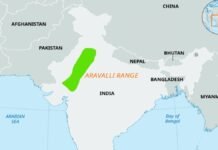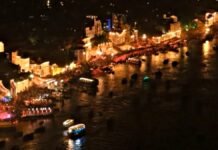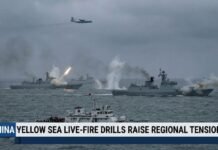
Key Points
- Historic 8.8 earthquake strikes Russia’s Kamchatka Peninsula, tied for the sixth largest ever recorded globally.
- Pacific-wide tsunami warnings issued impact felt in Russia, Japan, Hawaii, Alaska, U.S. West Coast, and New Zealand.
- 4-meter (13ft) tsunami waves submerge Russian port towns; evacuation orders for thousands.
- Japan, Hawaii, and U.S. West Coast braced as waves hit, prompting urgent calls for coastal evacuations.
- Significant property damage and injuries reported, marine life affected along Japan’s shore.
- Record aftershocks and ongoing seismic risk, including threats of more tsunamis in coming hours.
New Delhi: A record-setting magnitude 8.8 earthquake rocked Russia’s remote Kamchatka Peninsula at 11:24am local time, shaking vast areas and immediately triggering a Pacific-wide tsunami warning that sent shockwaves far beyond Russian borders. The quake, tied as the sixth strongest in recorded history, unleashed a chain reaction of chaos and urgent evacuations from Russia and Japan to Hawaii and the U.S. West Coast.
Tsunami Slams Russia And Japan, Destroys Port Towns
Waves as high as 4 meters (13 feet) crashed into the low-lying port of Severo-Kurilsk and Yelizovo District in Kamchatka, inundating buildings and sweeping away infrastructure. Dramatic drone and social media footage revealed entire neighborhoods submerged, with structures including a fish processing plant washed out to sea. Authorities declared a state of emergency, evacuating approximately 2,700 people just in the Severo-Kurilsk area.
Officials reported damage to kindergartens, medical facilities, airports, and power infrastructure, causing blackouts and injuries, though most were not life-threatening.
Pacific-Wide Panic and Swift Evacuations
- Japan: Tsunami warning sirens blared as the Meteorological Agency warned of waves 1–3 meters tall hitting coasts from Hokkaido down to central Japan. Citizens were evacuated from Pacific coast regions, and reports indicated marine animals (like whales) beached by the violent surge.
- U.S. and Pacific: Tsunami warnings and evacuation advisories covered Hawaii, Alaska’s Aleutian Islands, the U.S. West Coast, and as far as New Zealand, Chile, Ecuador, and the Solomon Islands. Hawaii prepared for imminent waves around 7pm local time, with officials urging immediate moves to higher ground.
- Guam, Micronesia, and beyond: U.S. officials monitored and issued advisories for multiple island nations.
Unprecedented Seismic Activity
The earthquake struck at a shallow depth (~20km), with its epicenter about 136km east of Petropavlovsk-Kamchatsky, Kamchatka’s largest city. It follows a major 7.4 magnitude foreshock just days earlier experts warn of ongoing aftershocks up to magnitude 7.5 for weeks to come.
Damage and Aftermath
- Entire port towns in Russia’s Far East temporarily submerged.
- Buildings especially low-lying ones damaged across Kamchatka, with infrastructure interruptions reported.
- Marine ecosystems disrupted; reports of stranded whales and other sea life along Japan’s shores.
- No confirmed fatalities, but several injuries and widespread displacement across affected zones.
- Power outages and concerns for communication, especially in rural Kamchatka.
Global and Regional Warnings Ongoing
Evacuation advisories and high-alert warnings remain across the Pacific Rim as officials watch for aftershocks and further tsunami risk. Residents are urged to remain on high ground until all-clear signals a precaution echoed by world leaders, including on global social media platforms.
This Kamchatka quake largest since the devastating 2011 Tōhoku event underscores the relentless power of the Pacific’s Ring of Fire. Ongoing updates are expected as aftershocks continue and authorities assess the full scale of destruction and recovery efforts.



















































